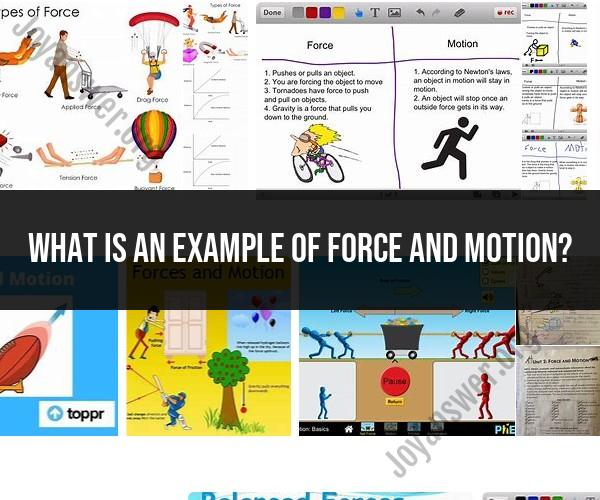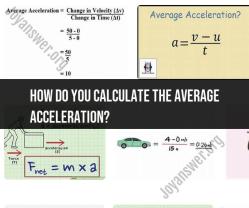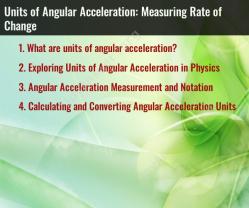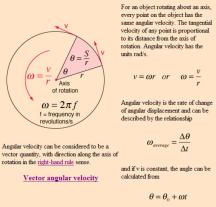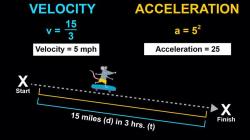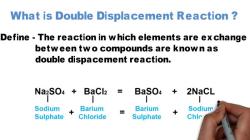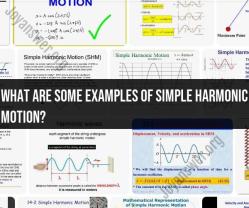What is an example of force and motion?
One classic example of force and motion is "Newton's Cradle." Newton's Cradle is a simple physics demonstration and desk toy that illustrates the principles of conservation of momentum and the transfer of energy through a series of swinging metal balls. Here's how it works:
Description:
- Newton's Cradle consists of a horizontal row of five or more metal balls suspended from strings or wires. The balls are of equal size and mass.
- The balls are initially at rest, hanging in a straight line.
Example of Force and Motion:
Initial Position: When you pull one of the balls at the end and release it (let's call this ball "A"), it swings downward, hitting the second ball (ball "B") at the opposite end.
Transfer of Momentum: Ball A transfers some of its momentum (motion) to ball B when they collide. As a result, ball B starts moving, while ball A comes to a stop for a brief moment.
Chain Reaction: The transferred momentum continues to move through the sequence of balls. Ball B, having gained momentum, swings upward and strikes ball C. This continues, with the energy and momentum transferring from one ball to the next.
Conservation of Momentum: As the sequence of collisions continues, you'll notice that the number of balls in motion remains the same. For example, if you started with five balls in motion, you'll end with five balls in motion. This demonstrates the principle of the conservation of momentum, which states that the total momentum of a closed system remains constant unless acted upon by an external force.
Elastic Collisions: Newton's Cradle is designed to show nearly elastic collisions, meaning that kinetic energy is conserved during the collisions. The balls move and bounce with little energy loss.
Demonstrating Physics Principles: Newton's Cradle is a visual representation of several key physics concepts, including the laws of motion (especially Newton's third law), conservation of momentum, and energy transfer.
This example of force and motion, Newton's Cradle, provides a simple yet effective way to observe and understand fundamental physics principles in action. It illustrates how the motion and energy of one object can be transferred to another through the interaction of forces, demonstrating the interconnectedness of forces, motion, and energy in the physical world.
Here is a real-life example of force and motion:
When you ride a bicycle, you apply a force to the pedals with your feet. This force causes the bicycle to accelerate. The bicycle continues to move forward until you stop pedaling or until it is stopped by a force such as friction or gravity.
In this example, the following forces are acting:
- Applied force: The force that you apply to the pedals with your feet.
- Friction: The force that opposes the motion of the bicycle wheels against the ground.
- Gravity: The force that pulls the bicycle down to the ground.
The net force on the bicycle is the sum of all the forces acting on it. In this case, the net force is the applied force minus friction and gravity.
If the applied force is greater than the sum of friction and gravity, the bicycle will accelerate. If the applied force is equal to the sum of friction and gravity, the bicycle will maintain its constant velocity. If the applied force is less than the sum of friction and gravity, the bicycle will decelerate.
You can use this example to understand how force and motion work in other real-life situations. For example, when you drive a car, you apply a force to the accelerator pedal to accelerate the car. When you brake, you apply a force to the brake pedal to decelerate the car.
When you throw a ball, you apply a force to the ball with your hand. The ball continues to move forward until it is stopped by gravity or air friction.
When you walk, you apply a force to the ground with your feet. The ground applies a force back on your feet, which is called friction. Friction opposes your motion, but it also helps you to maintain traction and prevents you from slipping.
Forces and motion are at play all around us, and they are essential for understanding the world around us. By understanding the basics of forces and motion, we can better understand how things work and make better decisions in our everyday lives.
